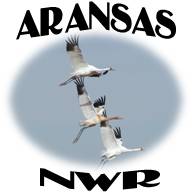Brian Johns, Wildlife Biologist,Canadian Wildlife Service writes WCCA that: “It is with mixed feelings that I write this note. As some of you know I have had a very enjoyable 36 year career with the Canadian WildlifeService.
My first day on the job was May 1, 1973. Over the last 3.5 decades I have had the opportunity to work on whooping cranes, sandhill cranes, loggerhead shrike, grassland and boreal songbirds and even the odd duck. It has all been fun. There is no perfect time to go, however I have been contemplating retirement for a while and am thinking that the time is near for leaving government and forging ahead. In preparation for that, Lea Craig-Moore has been conducting the surveys this summer.
Not being in the field earlier this year has allowed me to celebrate my anniversary at home with my wife Dianne and see my apple trees in blossom. This is something I haven’t had in a long time. I will still be doing the fledging success surveys later this month.”
Brian explains that, “The Aransas/Wood Buffalo cranes have had a tough year but in my experience they are not only beautiful creatures, they are resilient and have gone through adversity before and came out strong. Hopefully this is just another one of those periodic dips in their 10 year cycle. This doesn’t mean that we can be complacent, we must still remain vigilant in our efforts. A total of 62 nesting pairs have been found this summer, only 4 fewer than the all time high.”
Brian states, “I have learned so much from the cranes and all of you who care so much about them. My days in the field and at meetings with you have been inspiring. Thanks for your dedication to whooping crane recovery and
support over the years, it is truly appreciated. I especially want to thank Tom Stehn, Lea Craig-Moore, Jim Bredy, Kathy St. Laurent and my friends and colleagues in Fort Smith. Thanks also to my friends and colleagues with Canadian Wildlife Service, US Fish and Wildlife Service, US Geological Survey, Parks Canada, Governments of Saskatchewan, Alberta, Manitoba, Northwest Territories, Florida, Wisconsin, Calgary Zoo, International Crane Foundation, Patuxent Wildlife Research Center, Platte River Trust, Species Survival Center, Whooping Crane Conservation Association, Operation Migration, the Whooping Crane Eastern Partnership and all those that I have had the opportunity to work with over the years. Thanks again!”
Brian tells us, “Please remember, I am not gone, I have just moved over a bit, so feel free to pick my brain at any time. I will still be around the office for a couple of months yet. Long live cranes! Brian”

